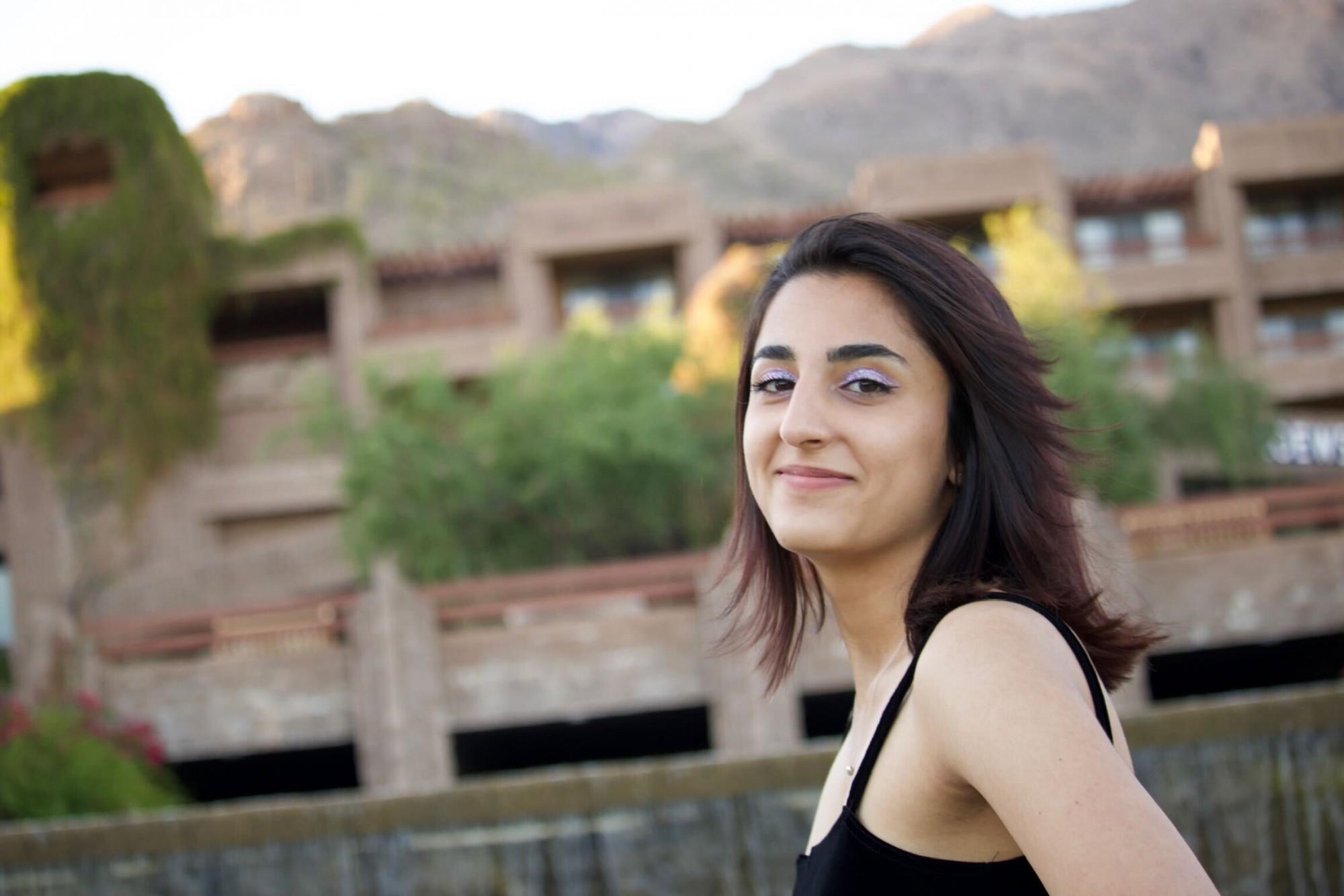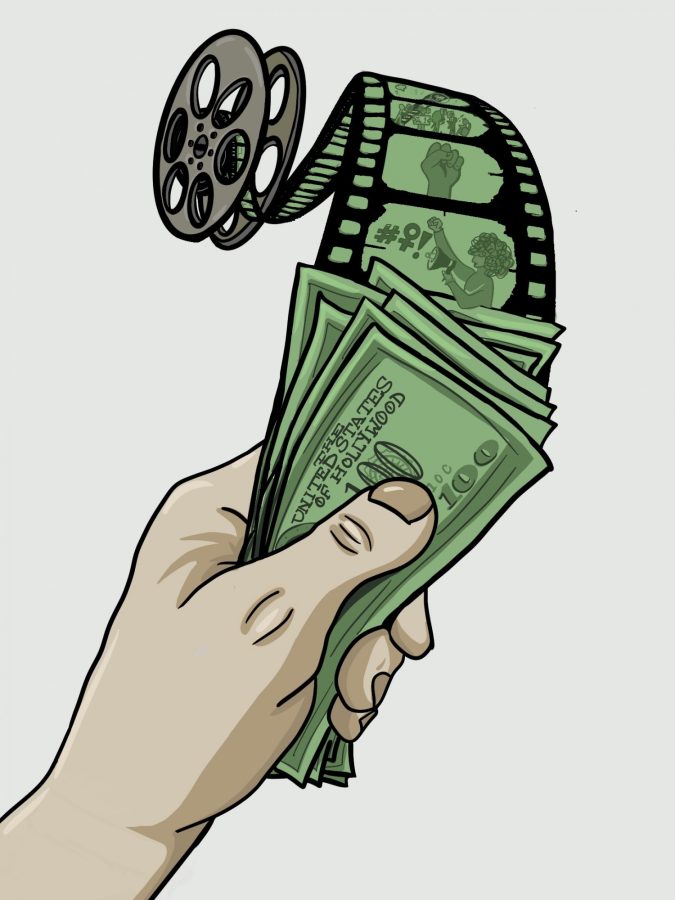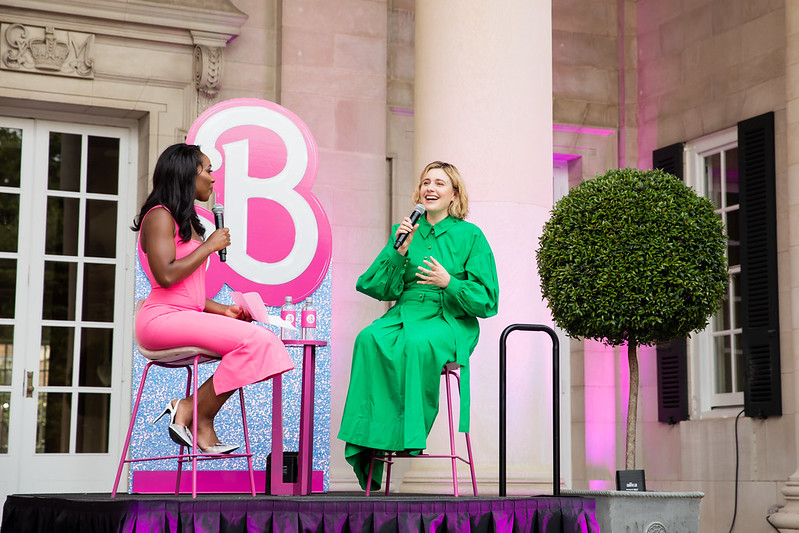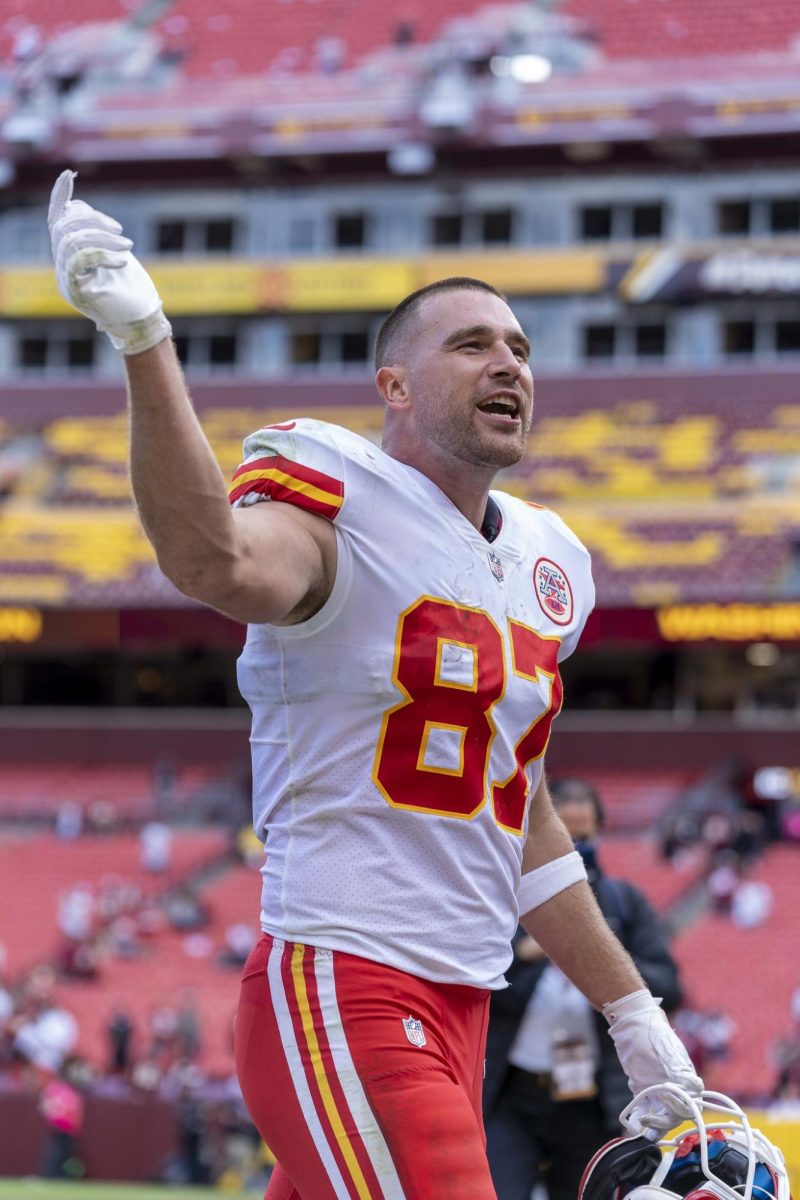An illustration of a film executive using diversity as a selling point by Emilie Marie Cuevas.
With each year of growing older, I have noticed the evolution of inclusivity in media. Most of the television I watched in my younger years consisted of all white casts; there were no gay Disney characters, and I certainly never saw anyone with a disability in a mainstream acting role. The exclusivity went beyond TV and film, reaching advertisement industries, modeling industries and news reporting media as well. Almost everyone who was anyone fit the blueprint: white, fit and straight.
Today, things are different, and for a good reason. Netflix especially elevated the game when it started releasing original series and casting minorities in major roles — Black, brown, Asian, queer and those with disabilities. Soon, other companies followed with ad campaigns promoting inclusivity. Unfortunately, most of these, like the infamous Pepsi advertisement, were embarrassing and offensive. “Wokeness” became so loud and so trendy, and I now wonder if it has lost its authenticity.
A large portion of Generation Z is passionate about fostering a diverse and just future, and TV and film executives recognize that fact. They are using that ambition, casting all sorts of backgrounds and employing their idea of empowering storylines, just to rack up views and, most importantly, dollars.
Unless it is imperative to the storyline, the fact that a character is a minority does not need to be announced. Their narrative should instead take its course as though they are on a level playing field with the others — there is no need to make their physical identifiers a theatrical exaggeration, while everyone else goes on living without being singled out for their appearance or identity.
There are, of course, programs that do execute the progressive perspective artfully. In my eyes, if creators really wanted to use their mediums as a way to advocate for diversity, they would present it with subtlety. For example, in some of my favorite animated films such as “Coco” (2017) and “Kubo and the Two Strings” (2016), foreign cultures are brought to the big screen seamlessly without the need to throw the “woke perspective” in the viewer’s face.
Then there are shows that achieve nothing but the reinforcement of stereotypes. Netflix may have been one of the trailblazers for progressive TV, but they disgrace that effort with overplayed scandals between gay teenagers or between a defiant brown girl and her strict parents, which have not only been exhausted but have no true intention of wokeness.
Nadia’s character on the Spanish drama “Elite” is a great example of this. As a hijabi woman in a primarily white school, “Elite” gave Nadia the most stereotypical storyline and identity. As one article pointed out, at the onset, viewers would appreciate the representation she provides, but making her the token Muslim girl who struggles between her traditional family and the typical teenage lifestyle of the West is a step backward. Rather than having her find peace with her true identity, she does a complete 180 by removing her hijab and getting swept up in the sex, drugs and rock and roll of the high school in “Elite.”
Not only does this narrative ruin the opportunity for character depth or growth beyond her outward-facing identity, it also reinforces the common misconceptions that one, the removal of the hijab is freeing for every woman and two, that freedom is only found in the material indulgences that everybody else partakes in.
The same weak inclusion of diversity applies to HBO’s reboot of the classic “Gossip Girl” series. To me, the new show’s primary focus is diversity and it tries so hard to represent the society we live in today, but ultimately ends up overcompensating. I am all for a diverse cast, and the reboot achieves that on the surface with the casting of two Black female leads, Asians, Hispanics and queer characters. But, again, most of the subplots are completely mediocre at best, meaning the show loses any potential for effective advocacy.
One of the bi-curious characters in the reboot, Aki, is caught in a struggle concerning him and his girlfriend’s failing relationship. He eventually cheats on her in an attempt to better understand his sexuality. With this, “Gossip Girl” makes it seem like it’s normal for closeted folks to cheat and lie, which is an outdated assumption at this point. Aki and his girlfriend, Aubrey, later realize what they’re missing is a bit of polyamory with the addition of their best friend Max.
Max might have the most depth out of all the characters in the show, but his character is handed what NPR calls, “one of the most awful and irresponsible tropes to ever be duplicated across high-school shows to the point where it is also a cliché.” This trope would, of course, be the student-teacher affair Max is involved in with a male teacher at school, which only further scandalizes sexual curiosity and identity searching itself for the sake of views.
RELATED: OPINION: Give these UA artists a listen to freshen up your playlist
The drama surrounding diverse characters is all for the views. Diverse characters should simply be integrated within the film and TV industry — something extremely influential on our mindsets — if we want any chance at normalizing their diversity rather than alienating those that break the norm.
Luca Guadagnino’s “Call Me by Your Name” (2017) follows the love story of two young men in 1983. I personally enjoy it for its poetic interpretation of mundane life. And, when drama presents itself, it is subdued, mellow and realistic — nothing like the tumultuous plots of recent TV. What goes unnoticed about a movie like “Call Me by Your Name” or “Brokeback Mountain” (2005) is that it takes on a plotline that any sort of cast could attain and it does not depend on the appearance or identity of characters; their love story is not special because the titular characters are gay, rather, it is special because they are meant to be together.
Another great example of normalizing queer relationships is Jules and Rue from “Euphoria.” For one, Jules’ background as a transgender girl is so well executed and so smoothly introduced. A reenactment of her childhood struggle with gender dysphoria and mental illness illustrates the hardship that many transitioning individuals resonate with. The story gives Jules depth and places her in an accurate, yet still original scenario for a trans woman, rather than a stereotypical one, which may have made her the punchline of a joke or the only girl that can’t find love. As Jules’s and Rue’s relationship develops, there is never any mention of her transgender identity again. She is just a regular girl doing regular things (relative to the norm of Euphoria high schoolers), which seems like the best way to dispel homophobia and transphobia through TV.
As viewers, it is important to note the stereotyping that TV. can often normalize. While the industry has made it a long way, even since the time I was a child in the 2000s, there is evidently a lot of room for improvement. TV and film executives should do their part as powerful disseminators of entertainment to implement diversity from an authentic standpoint rather than a greedy and haphazard one. As easily impressionable viewers, we must consider what side the show or movie we are watching comes from to avoid blind support. Let’s give our future the help it deserves by ensuring that genuine diversity is protected and promoted.
Follow the Daily Wildcat on Twitter

Noor Haghighi is a second-year student exploring ways to harness her passions in environmental science and journalism. She loves wildlife photography and portraiture, fashion, music and film.









